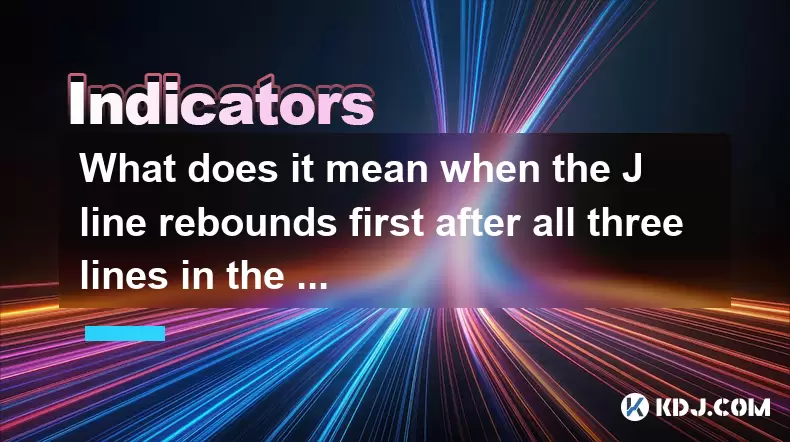-
 Bitcoin
Bitcoin $114800
-0.87% -
 Ethereum
Ethereum $4776
1.26% -
 XRP
XRP $3.035
-0.59% -
 Tether USDt
Tether USDt $0.9997
0.01% -
 BNB
BNB $868.3
-2.21% -
 Solana
Solana $207.8
2.24% -
 USDC
USDC $0.9999
0.00% -
 Dogecoin
Dogecoin $0.2321
-2.70% -
 TRON
TRON $0.3658
1.42% -
 Cardano
Cardano $0.9042
-1.85% -
 Chainlink
Chainlink $25.67
-0.24% -
 Hyperliquid
Hyperliquid $43.96
1.17% -
 Sui
Sui $3.679
-2.11% -
 Stellar
Stellar $0.4091
-1.83% -
 Ethena USDe
Ethena USDe $1.000
-0.01% -
 Bitcoin Cash
Bitcoin Cash $593.4
0.58% -
 Avalanche
Avalanche $25.53
0.89% -
 Hedera
Hedera $0.2476
-1.21% -
 Litecoin
Litecoin $119.7
-1.84% -
 UNUS SED LEO
UNUS SED LEO $9.609
0.34% -
 Toncoin
Toncoin $3.352
-0.91% -
 Shiba Inu
Shiba Inu $0.00001292
-2.45% -
 Uniswap
Uniswap $11.08
-1.13% -
 Polkadot
Polkadot $4.100
-1.09% -
 Cronos
Cronos $0.1609
4.53% -
 Dai
Dai $0.9999
0.00% -
 Bitget Token
Bitget Token $4.706
-0.88% -
 Aave
Aave $350.1
2.03% -
 Monero
Monero $268.0
0.06% -
 Ethena
Ethena $0.7069
-4.77%
What does it mean when the J line rebounds first after all three lines in the KDJ indicator simultaneously fall below 50?
When K, D, and J lines fall below 50 and the J line rebounds first, it signals weakening bearish momentum and a potential early reversal in crypto markets.
Aug 13, 2025 at 11:35 am

Understanding the KDJ Indicator and Its Components
The KDJ indicator is a momentum oscillator widely used in cryptocurrency trading to identify overbought and oversold conditions. It consists of three lines: the K line, the D line, and the J line. The K line is the fastest, reacting quickly to price changes, while the D line is a smoothed version of the K line. The J line, which is derived from the formula J = 3 × K - 2 × D, is the most sensitive and often moves with greater amplitude than the other two.
Each of these lines fluctuates between 0 and 100. When all three lines fall below 50, it typically indicates bearish momentum in the market. A value below 50 suggests that the current closing price is lower than the average price over the selected period, signaling weakening buying pressure. However, the behavior of the J line after such a drop can offer early clues about a potential reversal.
Significance of All Three Lines Falling Below 50
When K, D, and J all drop below 50, it reflects a broad loss of bullish strength across multiple timeframes. This condition often occurs after a sustained downtrend or during periods of strong selling pressure in cryptocurrency markets. Traders interpret this as a signal that the asset is in a neutral-to-bearish zone, with limited upward momentum.
In this scenario, the market may be consolidating or preparing for a directional breakout. The simultaneous drop below 50 does not necessarily mean the downtrend will continue, but it does suggest that buyers are not currently in control. The next key development traders watch for is which line begins to turn upward first, as this can hint at the nature and strength of any upcoming reversal.
Why the J Line Rebounding First Matters
When the J line rebounds first after all three lines have dipped below 50, it is considered an early bullish signal. Because the J line is the most volatile and responsive, its upward movement often precedes changes in the K and D lines. This rebound suggests that short-term selling pressure is easing and that buying interest may be returning.
The J line’s sensitivity allows it to capture sudden shifts in momentum that may not yet be reflected in the smoother K and D lines. A rebound in the J line while K and D remain below 50 can indicate a potential short-term bottom forming in the price action. This is particularly significant in volatile markets like cryptocurrencies, where rapid price swings can trigger quick reversals.
Interpreting the Signal in Cryptocurrency Trading
In the context of cryptocurrency trading, where price movements are often exaggerated due to high volatility and sentiment-driven behavior, the J line’s early rebound can be a valuable leading indicator. For example, if Bitcoin or Ethereum has experienced a sharp correction and all three KDJ lines fall below 50, a subsequent rise in the J line could suggest that panic selling is subsiding.
Traders might use this signal to anticipate a possible upward move, especially if it coincides with other technical confirmations such as bullish candlestick patterns, volume spikes, or support from key moving averages. However, because the J line is prone to false signals, it should not be used in isolation. Confirming the rebound with price action or additional indicators like RSI or MACD increases reliability.
How to Trade This KDJ Pattern: Step-by-Step Approach
- Monitor the KDJ indicator on a 4-hour or daily chart for major cryptocurrencies like BTC or ETH
- Wait for all three lines (K, D, J) to fall below 50, confirming bearish momentum
- Watch for the J line to cross above its previous value and begin rising, while K and D remain below 50
- Check for support levels on the price chart, such as horizontal support or Fibonacci retracement zones
- Look for increasing trading volume alongside the J line rebound to confirm renewed buying interest
- Consider entering a long position when the price breaks above a recent swing high or resistance level
- Set a stop-loss below the recent low to manage risk in case the rebound fails
- Use the crossover of the K line above the D line as a secondary confirmation of momentum shift
This method allows traders to act on early signals while managing risk through confirmation and proper position sizing.
Common Misinterpretations and Risk Factors
A rebound in the J line does not guarantee a sustained uptrend. Because the J line can swing rapidly, it may produce false signals during choppy or sideways markets. For instance, in a ranging market, the J line might bounce above 50 only to fall again, leading to premature entries.
Another risk is ignoring the broader market context. Even if the J line rebounds, negative news or macroeconomic factors can override technical signals. Additionally, low liquidity in smaller altcoins can cause erratic KDJ readings, making the indicator less reliable than in high-cap assets.
Traders must also avoid over-relying on single indicators. Combining KDJ analysis with price action, volume, and trend analysis helps filter out noise and improve decision accuracy.
Frequently Asked Questions
What does it mean if the J line rebounds but stays below 50?
A rebound below 50 suggests weakening bearish momentum but not yet a shift to bullish territory. It may indicate consolidation or a pause in the downtrend rather than a full reversal. Traders should watch for follow-through in the K and D lines.
Can this signal occur in overbought conditions too?
Yes. If all three lines are above 50 and the J line drops first, it can signal early bearish divergence, indicating a potential pullback. The same principle applies—J line sensitivity makes it a leading indicator in both directions.
Is the KDJ indicator effective on all timeframes?
The KDJ works on all timeframes, but shorter timeframes (like 15-minute charts) may produce more false signals due to volatility. It is generally more reliable on 4-hour, daily, or weekly charts, especially when combined with volume and trend filters.
How does the KDJ compare to the Stochastic Oscillator?
The KDJ is a modified version of the Stochastic Oscillator, with the addition of the J line for enhanced sensitivity. While both measure momentum, KDJ’s triple-line structure provides more nuanced signals, particularly in spotting early reversals through J line behavior.
Disclaimer:info@kdj.com
The information provided is not trading advice. kdj.com does not assume any responsibility for any investments made based on the information provided in this article. Cryptocurrencies are highly volatile and it is highly recommended that you invest with caution after thorough research!
If you believe that the content used on this website infringes your copyright, please contact us immediately (info@kdj.com) and we will delete it promptly.
- Viral Memes, RWA Platforms, and DePIN Crushers: What's Hot in Crypto?
- 2025-08-24 14:45:20
- Meta's Hypernova Glasses: AR's Next Big Thing?
- 2025-08-24 15:05:15
- Down Under Showdown: Australia vs. South Africa in ODI Cricket
- 2025-08-24 15:10:14
- XYZVerse, Shiba Inu, and the 2025 Bull Cycle: A Meme Coin Evolution
- 2025-08-24 13:05:12
- WLFI Token, BingX, and the Trading Landscape: A New York Perspective
- 2025-08-24 12:45:20
- Aave, Governance, Allocation: Navigating DeFi's Shifting Sands
- 2025-08-24 12:45:20
Related knowledge

What does it mean when the +DI and -DI cross frequently in the DMI indicator but the ADX is flattening?
Aug 11,2025 at 03:15am
Understanding the DMI Indicator ComponentsThe Directional Movement Index (DMI) is a technical analysis tool composed of three lines: the +DI (Positive...

What does the sudden appearance of a "dark cloud cover" candlestick pattern during an uptrend indicate?
Aug 13,2025 at 11:35am
Understanding the 'Dark Cloud Cover' Candlestick PatternThe dark cloud cover is a bearish reversal pattern in technical analysis that typically appear...

What does it mean when the moving average, MACD, and RSI all send buy signals simultaneously?
Aug 11,2025 at 01:42pm
Understanding the Convergence of Technical IndicatorsWhen the moving average, MACD, and RSI all generate buy signals at the same time, traders interpr...

What does it mean when both the KDJ indicator and the RSI show overbought signals simultaneously?
Aug 13,2025 at 11:35am
Understanding the KDJ Indicator in Cryptocurrency TradingThe KDJ indicator is a momentum oscillator derived from the Stochastic Oscillator, widely use...

What does it mean when the price is trading above the SAR indicator but the red dots are densely packed?
Aug 09,2025 at 11:49pm
Understanding the SAR Indicator and Its Visual SignalsThe SAR (Parabolic Stop and Reverse) indicator is a technical analysis tool used primarily to de...

What does it mean when the candlestick chart forms a "Morning Star" but trading volume is sluggish?
Aug 12,2025 at 06:28pm
Understanding the Morning Star Candlestick PatternThe Morning Star is a three-candle bullish reversal pattern commonly observed in cryptocurrency pric...

What does it mean when the +DI and -DI cross frequently in the DMI indicator but the ADX is flattening?
Aug 11,2025 at 03:15am
Understanding the DMI Indicator ComponentsThe Directional Movement Index (DMI) is a technical analysis tool composed of three lines: the +DI (Positive...

What does the sudden appearance of a "dark cloud cover" candlestick pattern during an uptrend indicate?
Aug 13,2025 at 11:35am
Understanding the 'Dark Cloud Cover' Candlestick PatternThe dark cloud cover is a bearish reversal pattern in technical analysis that typically appear...

What does it mean when the moving average, MACD, and RSI all send buy signals simultaneously?
Aug 11,2025 at 01:42pm
Understanding the Convergence of Technical IndicatorsWhen the moving average, MACD, and RSI all generate buy signals at the same time, traders interpr...

What does it mean when both the KDJ indicator and the RSI show overbought signals simultaneously?
Aug 13,2025 at 11:35am
Understanding the KDJ Indicator in Cryptocurrency TradingThe KDJ indicator is a momentum oscillator derived from the Stochastic Oscillator, widely use...

What does it mean when the price is trading above the SAR indicator but the red dots are densely packed?
Aug 09,2025 at 11:49pm
Understanding the SAR Indicator and Its Visual SignalsThe SAR (Parabolic Stop and Reverse) indicator is a technical analysis tool used primarily to de...

What does it mean when the candlestick chart forms a "Morning Star" but trading volume is sluggish?
Aug 12,2025 at 06:28pm
Understanding the Morning Star Candlestick PatternThe Morning Star is a three-candle bullish reversal pattern commonly observed in cryptocurrency pric...
See all articles

























































































